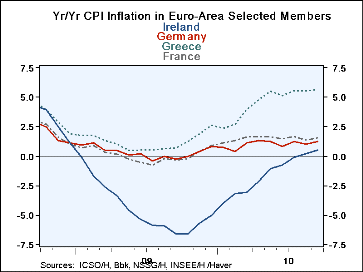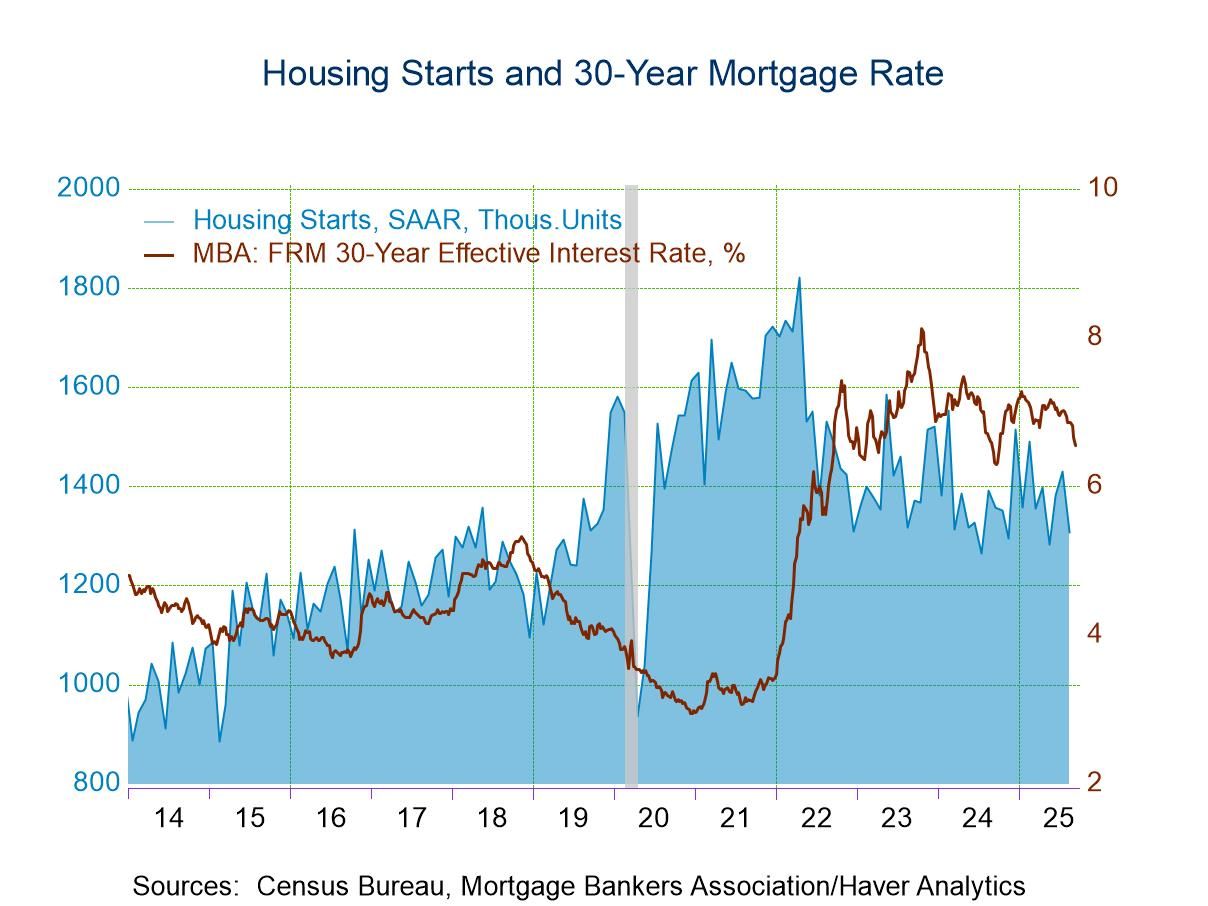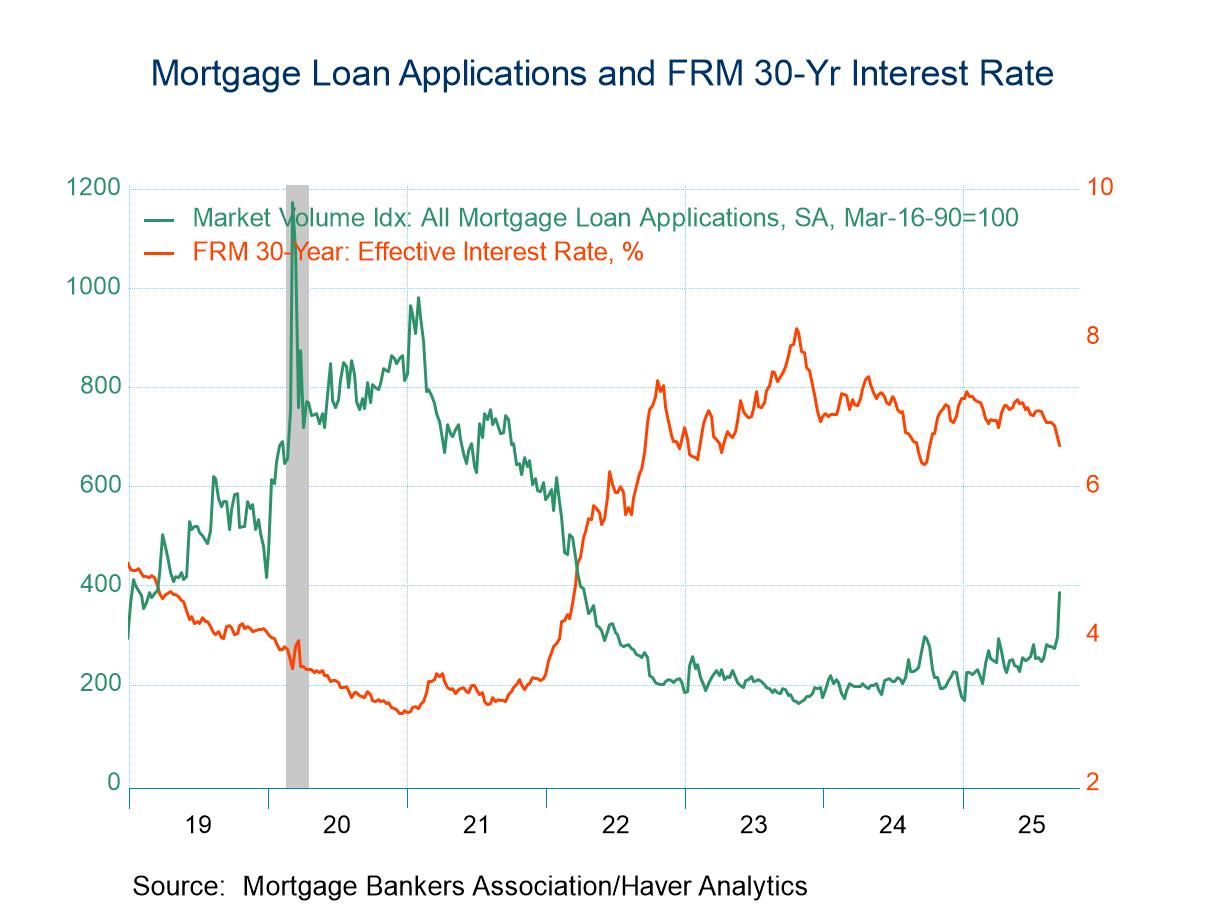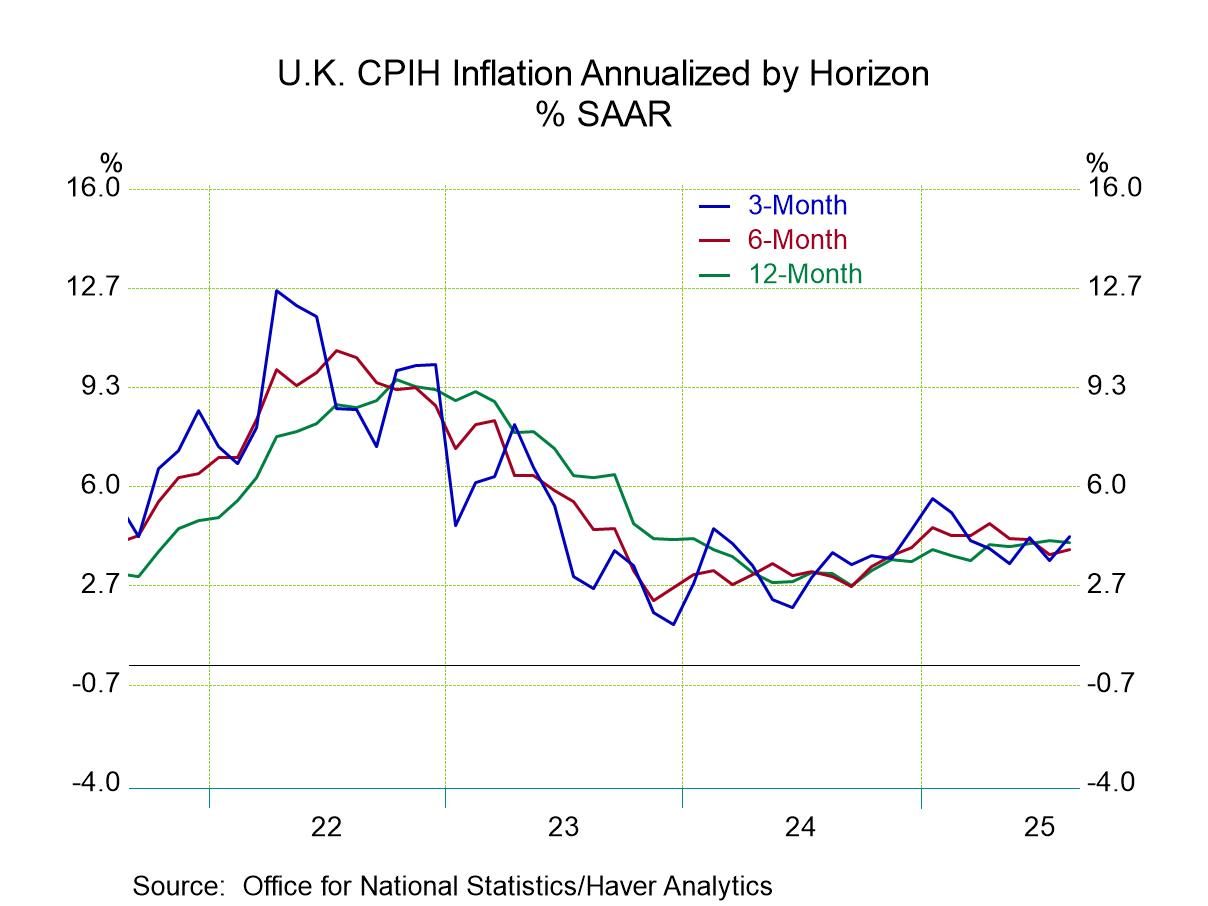 Global| Oct 14 2010
Global| Oct 14 2010Euro-Area inflation begins to creep up...As US fears its rate is creeping lower - this should be interesting
Summary
Trends under the surface - The final inflation number for the Zone in September is not yet in and core readings are missing as well. But we can look at the inflation trend by perusing the various trends in a number of 'early- [...]
 Trends under the surface - The final inflation number for the Zone in September is not yet in and core
readings are missing as well. But we can look at the inflation trend by perusing the various trends in a number of 'early-reporting'
Euro-Area members. By looking across their data we get a better sense of what is going into the Euro-stew it calls inflation:
the Euro-Area's HICP (Harmonized Index of Consumer Prices). What we find is that unlike the US where there is a 'concern' about
deflation there is little worry about deflation in the Euro-Area judging from the price trends in the early reporting countries
which include all the largest countries/
Trends under the surface - The final inflation number for the Zone in September is not yet in and core
readings are missing as well. But we can look at the inflation trend by perusing the various trends in a number of 'early-reporting'
Euro-Area members. By looking across their data we get a better sense of what is going into the Euro-stew it calls inflation:
the Euro-Area's HICP (Harmonized Index of Consumer Prices). What we find is that unlike the US where there is a 'concern' about
deflation there is little worry about deflation in the Euro-Area judging from the price trends in the early reporting countries
which include all the largest countries/
Inflation is your friend!
Of course, the first implication of this finding is that the euro will rise and the dollar
will fall and that trend has been in train for a while. At the first whiff of 'QE' the dollar was in trouble but now trends on both
sides of the Atlantic underpin this view. The US is almost 110% certain to go on a program of quantitative easing (called QEII).
As it does this it hopes to reflate the economy and Fed members are speaking specifically about RAISING inflation expectations
AS A POLICY GOAL. In all my life as a professional economist inflation has been the enemy and now finally
the 'Saturday Night Live' skit starring the ersatz Jimmy Carter is becoming a reality (The 'Inflation is your friend,'
skit starring Dan Aykroyd). The details can be found here.
Ok, not if you're long dollars...
That sort of policy tilt should push the dollar down as the
Fed is considering very accommodative monetary policy. Meanwhile, back at the euro-ranch inflation is already being
pressured up without any aid and if anything the ECB will be holding rates here or hiking them. Now it's premature to
hike them and core inflation in the Zone is moderate and headline inflation is too, but it is the direction that matters
here and the direction for inflation in the Zone is up.
Not de-coupling but out of sync; while the dollar is in sink
Macro policy and trends in the US and in Europe
are dictating this Fx move. The US is getting what it wants but it may find that what is gets will become unwanted at some point.
But the Fed side of the argument is focused on the very short run and its fear of longer-run risks. The ECB's Weber started yesterday
a discussion of taking away the extra aid in the form of ECB bond buying of sovereign debt. In this month's policy statement the ECB is
describing the Euro's value and seems to encourage the notion of a stronger euro by pointing out that is still below its 2009 average
value. The Fed and the ECB are on very different pages even in the short run, but they have reached a point compatibility in the foreign
exchange market.
Some have it bad but few have it good
In the Zone inflation is the most advanced in Greece where the price level is rising
faster than anywhere else in the zone. And it is accelerating faster too. The chart I makes the point that inflation has been rising
everywhere in the zone. Belgium, the Netherlands, Greece and Ireland show the most uptrend to inflation. For the rest of the zone
members inflation moved up from its cycle lows and has been mostly moving sideways since then with some having small positive
gradients and others showing small negative gradients.
Flexible rates will do their thing: FLEX
What we see is a very non-convergent set of macro policy situations that
have the wherewithal to create a lot of international tensions. Europe is growing faster than the US and has adopted austerity to
cap its growth and limit the spin-off of positive stimulus for the rest of the world. The austerity does seem to be slowing it down
so maybe these price trends will be cut short of continuing their uptrend where those uptrend exist. In the US the economy's recovery
started out OK but has since remained sluggish and the Fed now seems more worried than what its forecasts reveal about its formal
expectations of the future. The Fed is in the process of adopting a very controversial 'stimulus program' that seems to put job
growth first and prices second (let's not say that 'price stability' is second since the Fed professes a concern that inflation is
trending down and is already close to being too low). Japan is simply stuck in the mud and still spinning its wheels. China, the big
new player, wants to go on with business as usual and does not grasp the fact that its size now makes its behavior endogenous; it can
no longer expect the special treatment of a 'small' underdeveloped outsider. China must step up and play the trade game by the real rules
of the game. It will when it stops pouting.
Worries without reason?
In the US, inflation remains at bay – but more importantly so does deflation. There is no hint in
the day's PPI that inflation is moving even lower. But the Fed remains worried and the worries in Europe are of a different sort. Therein
lies the tension. To each region, its own policy and that is what a flexible exchange rate system allows and demands, but there still are
consequences. These will continue to play out. For now at least the die seems to be cast. Europe is engaged in austerity and in regaining
fiscal discipline; the US is trying for monetary stimulus. China is unhappy. Japan is unhappy. There are the trappings for trade wars and
there is name-calling over competitive depreciations. Ok there are plenty of reasons to worry but maybe more reason to worry about what
policy is doing than what it is fighting.
| Euro-Area & Friends: Headline Inflation Yr/Yr And Trends | ||||||
|---|---|---|---|---|---|---|
| Year/year | Mo/Mo | 3Mo: AR | 6Mo:Ar | |||
| Total HICP | Sep-10 | Jul-10 | Sep-10 | Aug-10 | Sep-10 | Sep-10 |
| Belgium | 2.9% | 2.5% | 0.6% | 0.6% | 2.9% | 2.0% |
| Finland | 1.5% | 1.3% | 0.3% | 0.4% | 2.9% | 1.8% |
| France | 1.8% | 1.9% | 0.2% | 0.0% | 1.6% | 0.6% |
| Germany | 1.3% | 1.2% | 0.2% | 0.2% | 1.9% | 0.6% |
| Greece | 5.7% | 5.5% | 0.2% | 0.5% | 5.2% | 5.8% |
| Ireland | -1.0% | -1.2% | -0.1% | -0.1% | 1.1% | -0.2% |
| Italy | 1.6% | 1.8% | 0.1% | 0.5% | 1.8% | 1.6% |
| Luxembourg | 2.6% | 2.9% | 0.2% | 0.3% | 4.8% | 1.3% |
| The Netherlands | 1.4% | 1.3% | 0.3% | 0.0% | 2.0% | 0.8% |
| Spain | 2.1% | 1.9% | 0.1% | 0.4% | 3.9% | 2.0% |
| EU & Other Total HICP/CPI | ||||||
| UK(HICP) | 3.1% | 3.1% | 0.2% | 0.3% | 2.1% | 1.9% |
Robert Brusca
AuthorMore in Author Profile »Robert A. Brusca is Chief Economist of Fact and Opinion Economics, a consulting firm he founded in Manhattan. He has been an economist on Wall Street for over 25 years. He has visited central banking and large institutional clients in over 30 countries in his career as an economist. Mr. Brusca was a Divisional Research Chief at the Federal Reserve Bank of NY (Chief of the International Financial markets Division), a Fed Watcher at Irving Trust and Chief Economist at Nikko Securities International. He is widely quoted and appears in various media. Mr. Brusca holds an MA and Ph.D. in economics from Michigan State University and a BA in Economics from the University of Michigan. His research pursues his strong interests in non aligned policy economics as well as international economics. FAO Economics’ research targets investors to assist them in making better investment decisions in stocks, bonds and in a variety of international assets. The company does not manage money and has no conflicts in giving economic advice.






